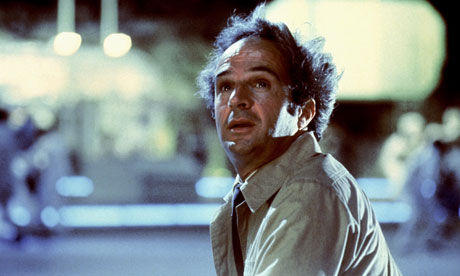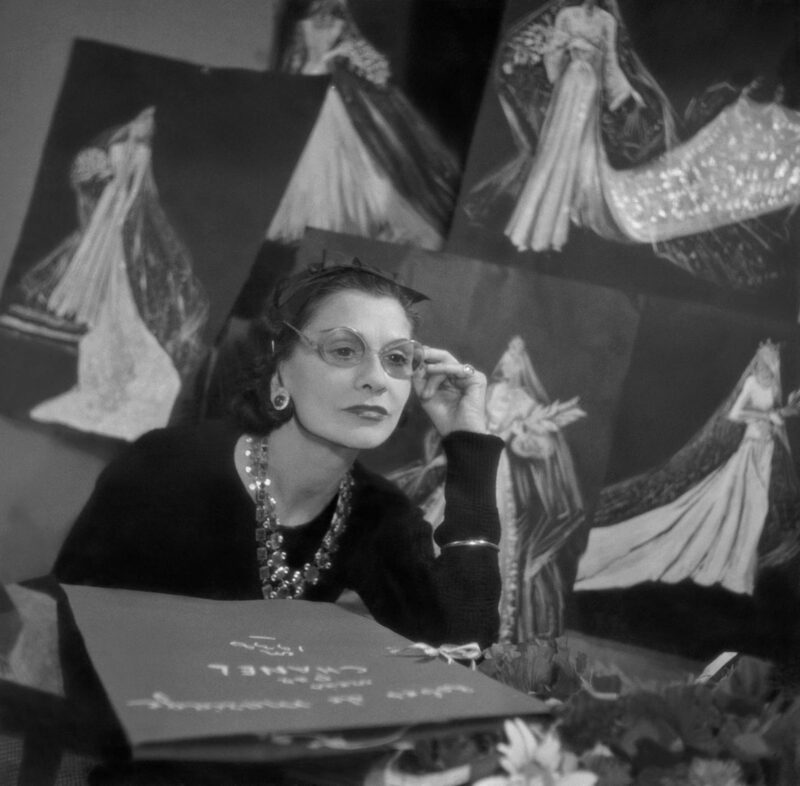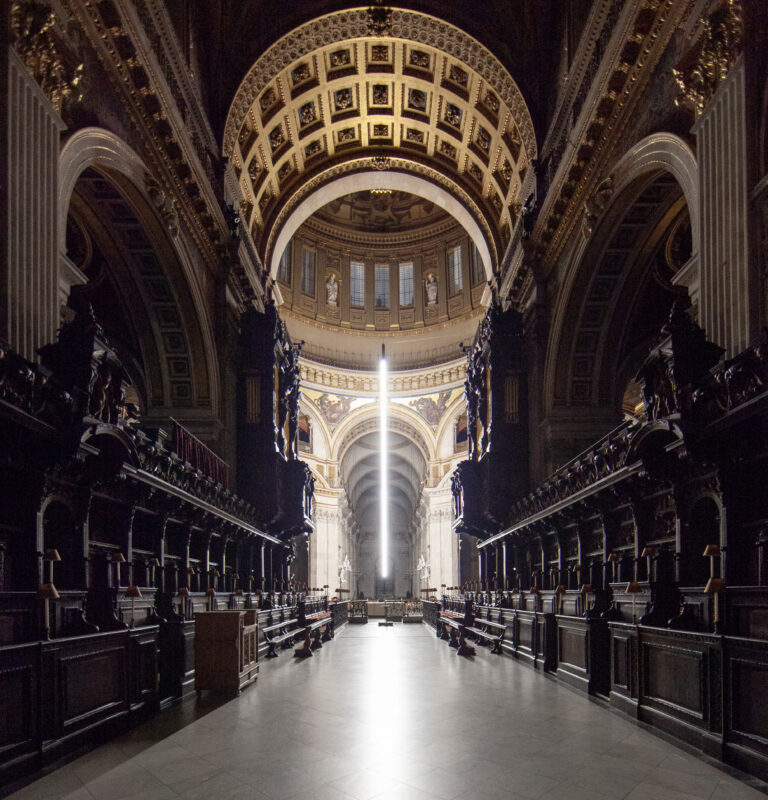
Image:The revelation that unfurls is beyond understanding’ … Close Encounters of the Third Kind (1977). Photograph:Columbia/Sportsphoto Ltd/Allstar
Is Close Encounters of the Third Kind the first and greatest work of postmodern art? As the Victoria and Albert Museum prepares to unveil its exhibition Postmodernism, I have been watching Steven Spielberg’s 1977 science-fiction film and it struck me as a work of art, almost a filmed installation, that defines what “postmodernity” is, or was, or will be. I remember seeing a still from the film, a few years ago, in an exhibition in some New York gallery or other. But even without that prompt, the postmodern look of Close Encounters is hard to ignore.
A man sees lights in the sky that move and dance. He is not imagining things. The aliens have arrived, in a glorious nocturnal spectacle of fear and wonder. At home, he starts making models, first of clay then of earth and rock, of a mountain in his mind’s eye. That too turns out to be a real place, where he intrudes on a secret scientific gathering and finally enters the blinding light of the alien mothership.
What makes me call this film “postmodernist“? Partly it is the homely suburban world where Spielberg sets his story. American films have a long heritage of adventure. Big films before this tended to be set in big places with big characters – but Richard Dreyfuss plays a nobody who lives in nowhereseville to whom something weird happens.
In high art, postmodernism was the moment when the idea of the avant garde as a radical movement – rejecting conventional society and pushing perception forward into an ever more ambitious vision of the new – collapsed. The lofty idealism of a Rothko was suddenly unconvincing to advanced artists. The idea of artists as prophets or priests was abandoned. Artists were not special and neither was art. This was above all an American moment, for it was in America in the 1950s and 60s that modernism attained its loftiest heights and shaped a national culture, from skyscrapers to the space race.
Close Encounters marks this same moment in popular culture. Science fiction is a form of modernism. It shares modern art’s belief in progress and meaningful change: it proposes a history of the future. 2001, the great modernist science fiction film, actually creates a model of history in which we evolve as a species under alien guidance. By contrast, Close Encounters does not offer any sense of history or progress or any theory as to what the alien encounter means. It is rooted in everyday suburbia and the revelation that unfurls is beyond understanding. In fact, it does not feel right to call it “science fiction” at all, for it refuses the genre’s rationality.
Instead of reasoning, Dreyfuss builds a mountain in his home, like a work of contemporary art. The new artists of the postmodern age in the 1980s, from Cindy Sherman to Jeff Koons, did not claim a loftier vision or even a higher level of skill than other people. They were suburban artists, like Dreyfuss, using the stuff of everyday life to make images at once ordinary and bizarre.
Postmodernism anticipated the fall of the Berlin Wall, the fall of communism, and a world with a single superpower: a global, American, suburban culture. But as soon as those things came to pass at the end of the 1980s, art moved on again, imaginations railed at the supposed complacency of postmodernism and turned once more to grand themes of death, history and mourning. Spielberg himself took up the burden of the Holocaust, leaving the unexplained, eerie optimism of Close Encounters – whoever they are, the aliens mean us no harm – far behind.
Spielberg was at his best, and so was postmodernism, in that spookily still and light-filled moment when a suburban man steps into a spaceship, and history ends. (Of course, you may have found this pretentious and baffling. But, as the movement that launched a thousand cultural theories, that, too, was typical of the postmodernist era the V&A is about to celebrate.)
guardian.co.uk © Guardian News & Media Limited 2010
Published via the Guardian News Feed plugin for WordPress.









